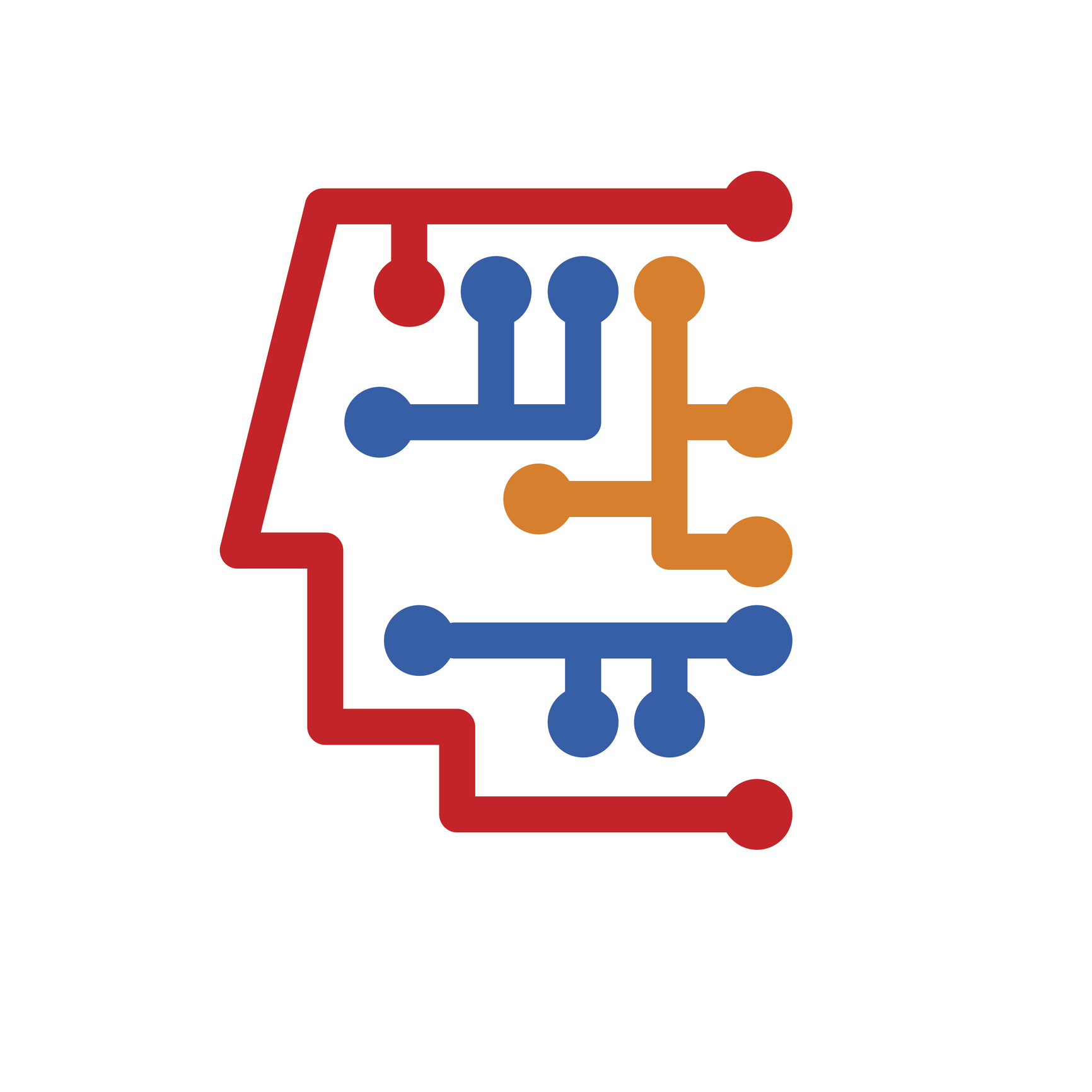
Context, not content, is the key says Andrea Macarie
Mark Zuckerberg’s New Year resolution for 2016 was to build an AI (artificial intelligence) assistant based on Iron Man’s Jarvis, to help him at home and with his work. Which he did. In December, he finally revealed the name of the actor voicing it. Any guesses? Some of the volunteers were Robert Downey Jr and even Arnold Schwarzenegger… I can just imagine the smile on your faces right now. In all seriousness, his AI assistant will be voiced by Morgan Freeman. Phew!
Clearly Science Fiction has become Science Fact. But the idea of AI assistants is not new. Many technology companies have invested in building or acquiring AI assistants over the last couple of years: Samsung acquired Viv, an AI assistant built by the creators of Apple’s Siri; Google has been working on evolving Google Now and Microsoft acquired an AI assistant start-up. AI assistants were also the number one hot tech trend in 2015 and 2016 according to INC, alongside intelligent drones, the internet of things or virtual reality.
Now let me ask you: have you ever wondered what the future of our profession will be like? You probably have, haven’t you? I too have given it lots of thought. When you are surrounded at work and at home by computer science engineers and experts in AI, natural language processing, human computer interaction, user modeling and voice recognition, amongst others, you feel extremely privileged to have the opportunity to see the digital trends first-hand and glimpse into the future. But it also makes you wonder what value you add, whether you are up-to-date and, truth be told, why your techie bosses who use the latest apps and gadgets need you.
And on top of it, you hear your colleagues talk in the kitchen about this thing that makes scheduling easier. Aha, a new feature in Outlook, I thought. Fantastic! I can’t wait to find out more about it and share with the Assistant community because, like I’m guessing some of you reading this article now, I’m the only assistant in the company so help is much needed. As the conversation went on, I found out that her name was Amy and she was really techie. Hmm… So this Amy lady is an artificial intelligence scheduling assistant that makes busy execs life easier and is cheaper than a real life assistant. Some consider it a “promoted” Siri or Cortana. You sign up (there is a free version as well but you get on a never-ending waiting list), copy Amy in the emails you send, grant her access to your execs calendars and she starts doing her “miracle”. Except… she is not magic. She obviously suggests available slots, even takes into account time zones and all but, as you dig deeper, you understand why you’re still your executive’s life-saver. No doubt that scheduling is still a large part of our daily work, but we do so much more. You see, while Siri, Cortana, Amy and other AI assistants are content-based, we are still the ones who have (and take into account) context. Reading between the lines, ever-changing priorities, irony and humor, is very difficult, in the short term, for machines to handle.
The Turing Test
Does the name Alan Turing sound familiar? Turing was a British mathematician and codebreaker, considered the father of Computer Science and Artificial Intelligence. He is most famous for building the machine that cracked the Enigma code during World War II. But he is also known for developing the Turing Test.
This test assesses a machine’s ability to carry on a conversation with a human, to generate its own thoughts in response to not only questions, but also statements made by a human. It must do so convincingly, so that a person will think they’re talking to another person. The test doesn’t check the ability to give correct answers to questions, only how closely answers resemble those a human would give.
Do you think Siri, Cortana, Google Now or other similar AI assistants would pass the Turing Test? True, quite unlikely. Because, no matter how much artificial intelligence there is behind them, these assistants are still… ARTIFICIAL. This tweet of an MIT Tech Review article shows that AI assistants basically lack common sense.

Why do we ask ourselves all these questions about the future of our profession, how technological advances impact it and what’s next for us? Most likely the reason has to do with today’s corporate landscape, where organizational change has become a permanent feature. With companies cutting costs, simplifying processes and opening up new business opportunities to avoid loss of market share, revenues, margin, etc., organizational change often involves a reduction of staff. But somebody still needs to do the work, right?
This is why we, the 21st century Assistants, have taken on more responsibilities and tasks which used to be in the job description of middle managers, such as: project management, event planning & organization, public relations, corporate communications, and the list could go on.
Like Lucy Brazier and Bonnie Low-Kramen often say, there has never been a better time to be an Assistant than right now. However, there has also never been a more complicated time than right now.
We need to be at the top of our game and never stop learning in order to keep up with the changes. Technology and innovation are playing a crucial role in this process. Accepting and embracing it will help us work smarter.
What is Innovation?
Innovation, according to Wired Magazine, is one of the most important and overused words. There are many definitions but the one that I particularly like the most is the “transformation of an idea or resource into useful applications” as opposed to invention, which is the “creation of something new”. In other words, while invention is coming up with something new (but not necessarily useful), innovation is coming up with a better way to use it.
How is distinguishing these two concepts (invention vs. innovation) relevant for our role as Assistants? Let’s think about Amy, Siri, Cortana and the other AI assistants. Using them and other apps to work smarter, now that is an innovative EA. As we take on more and more responsibilities, we need to simplify processes so we can focus on the ones that add value and automate the time-consuming tasks with little impact on the business but that still need to be done. Technology is an enabler. Just think of apps you are probably already using, like business card readers (e.g. SamCard) that spare us from having to type each letter, expense reporting apps with user-friendly interface (e.g. Expensify), apps for note taking (e.g. Notability), project management (e.g. Trello) and even scheduling assistants like Amy that, despite being far from perfect, can be useful under our supervision. The repetitive admin tasks are the easiest to be taken on by AI assistants. These are tasks that require only or mainly content as opposed to the ones involving context or social and cultural intelligence.
How do we know if our job is future-proof?
Bernard Marr, a best-selling author and leading business and data expert, suggests one way to think about our jobs and how vulnerable they might be by distinguishing between algorithmic and heuristic work. An algorithm, by definition, is a self-contained step-by-step set of operations to be performed. The issue with algorithmic tasks is that they can be done by anyone, or anything, like robots and computers. In fact, if the goal is speed and standardization, often a robot is a better choice. Elevator operators or switchboard operators became obsolete and in the near future, this will extend to all sorts of roles including certain customer service and technical support jobs. Heuristic work, on the other hand, requires insight, inductive reasoning and creativity.
Jobs generally are not entirely algorithmic or heuristic. They tend to fall on a spectrum, with algorithmic tasks at one end and heuristic at the other.
I would like you to take a moment and think about your tasks as Assistants at the companies you work for. I know, the list can be long and changing. Still, try to think about, say, 6 or 7 that come to your mind right now. Ready?
Okay, now use this 1 to 10 scale to classify the tasks, with 1 being algorithmic and 10 heuristic. Algorithmic means it is easy to automate, while heuristic means it is harder to automate as it requires context. Where do they fall? Remember, there is no right or wrong answer.

When we do this activity in my training sessions, there is always an insightful debate on algorithmic vs. heuristic: to some delegates the same activity can be either algorithmic or heuristic depending on the companies and bosses they work for.
The purpose of this activity is to help you identify the more algorithmic tasks, be it expense reports, business card processing or others, and, more importantly, find solutions to automate them. You might wish to include them in your individual development plan in order to keep track of progress. As we have said before, in the context of organizational change and taking on more and more responsibilities, we need to simplify processes so we can focus on the tasks that add more value to our executives and companies. For the rest, we have apps and AI Assistants.
At our level, it’s not about content anymore. What makes the difference is context and how we manage it. It is what makes us more strategic and harder to replace. Of course, no-one is irreplaceable, but the more value we add to our executives, making their jobs and life easier, the more they’ll invest in us, so it’s a win-win.
This is why the classification of our tasks in algorithmic vs heuristic is so useful to keep focusing on the value we add in the environment in which we operate.
One of Steve Jobs’ most famous quotes is “Innovation distinguishes between a leader and a follower”. In our roles, I truly believe that “Innovation distinguishes between a reactive and a proactive assistant”. Executive Secretary kindly included this quote in the Motivational Notebook, for which I am extremely grateful.
If we want to be strategic business partners, we need to be perceived as leaders and leaders proactively challenge the status quo. Leaders unleash their potential, seeking to become the best versions of themselves. They see innovation as the means to work smarter, not harder.
Innovation is a mindset and more and more companies look for this quality in future employees. One of the world’s leading Internet television networks looks for these 9 values in their future employees: judgment, communication, impact, courage, selflessness, honesty, passion, curiosity AND Innovation.
Their definition of innovative employee is a person who looks for practical solutions, suggests better approaches, implements useful ideas and, above all, simplifies! Now honestly, we are already doing all these in our daily work, right?
So companies change, simplify processes, cut costs, implement technological advances, look for innovative employees like us, who take on more and more responsibility and deal with complex situations, but, where does innovation start? It starts with YOU and then positively impacts the team, the company and society as a whole.
President Obama said: “We live in a time of extraordinary change”.
So, let’s embrace change and the opportunities it brings, put invention at the service of our innovative mindset, continually learn, research and test in order to be at the top of our game. After all, our profession has undergone numerous changes over the last decades so it is in our DNA.












